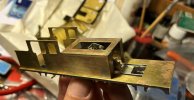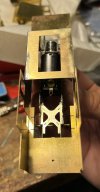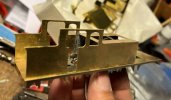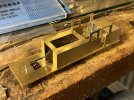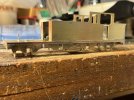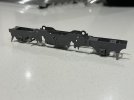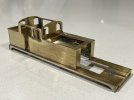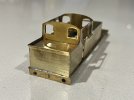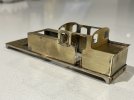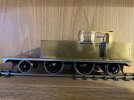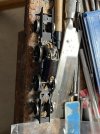Nigel,
if I’ve understood correctly, the loco has two pony trucks, and two driving axles. The driving axles are both suspended by see-saw compensation beams, one attached to each frame. If so, it appears that the designer intended springs on the pony trucks (which is what you’re doing), or failed to arrange some other kind of support in pitch.
I think a very simple solution would be to fix one of your compensation beams to its frame. This will provide pitch stability. The other compensation beam will do it’s stuff, and keep all four drivers on the rails. Three point compensation. Your pony trucks then only need to stay on the track, light springing or weight.
Initially, I’d just tighten the pivot screw & nut, but once it’s running nicely and level, you could pop a pin through beam and frame, or just a blob of solder, of course.
atb
Simon
